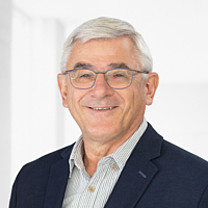Thomas M, Felcht M, Kruse K, Kretschmer S, Deppermann C, Biesdorf A, Rohr K, Benest AV, Fiedler U, Augustin HG. Angiopoietin-2 stimulation of endothelial cells induces alphavbeta3 integrin internalization and degradation. J Biol Chem. Jul 30;285(31):23842-9, 2010.
Korff T, Braun J, Pfaff D, Augustin HG, and Hecker M: Role of ephrinB2 expression in endothelial cells during arteriogenesis: Impact on smooth muscle cell migration and monocyte recruitment. Blood prepublished online April 29, 2008.
Alajati A., Laib AM, Weber H, Boos AM, Bartol A, Ikenberg K, Korff T, Zentgraf H, Obodozie C, Graeser R, Christian S, Finkenzeller G, Stark GB, Héroult M & Augustin HG: Spheroid-based engineering of a human vasculature in mice. Nat Methods. 5(5):439-45, 2008.
Goettsch W, Gryczka C, Korff T, Ernst E, Goettsch C, Seebach J, Schnittler HJ, Augustin HG, Morawietz H: Flow-dependent regulation of Angiopoietin-2. J Cell Physiol. 214(2):491-503, 2008.
Nacak TG, Alajati A, Leptien K, Fulda C, Weber H, Miki T, Czepluch FS, Waltenberger J, Wieland T, Augustin HG, Kroll J. The BTB-Kelch protein KLEIP controls endothelial migration and sprouting angiogenesis. Circ Res. 100(8):1155-63, 2007.
Shraga-Heled N, Kessler O, Prahst C, Kroll J, Augustin H, Neufeld G., Kroll J. Neuropilin-1 and neuropilin-2 enhance VEGF121 stimulated signal transduction by the VEGFR-2 receptor. FASEB J. 21(3):915-26, 2007.
Fiedler U, Reiss Y, Scharpfenecker M, Grunow V, Koidl S, Thurston G, Gale NW, Witzenrath M, Rosseau S, Suttorp N, Sobke A, Herrmann M, Preissner K, Vajkoczy P, Augustin HG. Angiopoietin-2 sensitizes endothelial cells to TNF? and plays a crucial role in the induction of inflammation. Nat. Med. 12:235-239, 2006.
Korff T, Dandekar G, Pfaff D, Füller T, Goettsch W, Morawietz H, Schaffner F, Augustin HG. Endothelial ephrinB2 is controlled by microenvironmental determinants and associates context dependently with CD31. Arterioscl. Thromb. Vasc. Biol. 26: 468-474, 2006.
Nacak TG, Leptien K, Fellner D, Augustin HG, Kroll J. The BTB-kelch protein LZTR-1 is a novel Golgi protein that is degraded upon induction of apoptosis. J Biol Chem. 24;281(8):5065-71, 2006.
Athanasopoulos AN, Economopoulou M, Orlova VV, Sobke A, Schneider D, Weber H, Augustin HG, Eming SA, Schubert U, Linn T, Nawroth PP, Hussain M, Hammes HP, Herrmann M, Preissner KT, Chavakis T. The extracellular adherence protein (Eap) of Staphylococcus aureus inhibits wound healing by interfering with host defense and repair mechanisms. Blood 107: 2720-2727, 2006.
Müller SM, Terszowski G, Blum C, Haller C, Anquez V, Kuschert S, Carmeliet P, Augustin HG, Rodewald HR. Gene targeting of VEGF-A in thymus epithelium disrupts thymus blood vessel architecture. Proc Natl Acad Sci U S A. 26;102(30):10587-92, 2005.
Saharinen P, Kerkela K, Ekman N, Marron M, Brindle N, Lee GM, Augustin H, Koh GY, Alitalo K. Multiple angiopoietin recombinant proteins activate the Tie1 receptor tyrosine kinase and promote its interaction with Tie2. J. Cell Biol. 169:239-243, 2005.
Scharpfenecker M, Fiedler U, Reiss Y, Augustin HG. The Tie-2 ligand Angiopoietin-2 destabilizes quiescent endothelium through an internal autocrine loop mechanism. J. Cell Sci. 118:771-780, 2005.
Goettsch W, Augustin HG, Morawietz H. Down-regulation of endothelial EphrinB2 expression by laminar shear stress. Endothelium 11:259-265, 2004.
Wenger A, Stahl A, Weber H, Finkenzeller G, Augustin HG, Stark GB, Kneser U. Modulation of in vitro angiogenesis in a three-dimensional spheroidal coculture model for bone tissue engineering. Tissue Eng. 10(9-10):1536-47, 2004.
Stahl A, Wenger A, Weber H, Stark GB, Augustin HG, Finkenzeller G. Bi-directional cell contact-dependent regulation of gene expression between endothelial cells and osteoblasts in a three-dimensional spheroidal coculture model. Biochem Biophys Res Commun 322: 684-692, 2004.
Hegen A, Koidl S, Weindel K, Marme D, Augustin HG, Fiedler U. Expression of angiopoietin-2 in endothelial cells is controlled by positive and negative regulatory promoter elements. Arterioscler Thromb Vasc Biol 24: 1803-1809, 2004.
Korff T, Krauss T, Augustin HG. Three-dimensional spheroidal culture of cytotrophoblast cells mimics the phenotype and differentiation of cytotrophoblasts from normal and preeclamptic pregnancies. Exp. Cell Res. 297: 415-423, 2004.
Krauss T, Pauer HU, Augustin HG. Prospective analysis of placenta growth factor (PlGF) concentrations in the plasma of women with normal pregnancy and pregnancies complicated by preeclampsia. Hypertens Pregnancy 23(1):101-11, 2004.
Fiedler U, Scharpfenecker M, Koidl S, Hegen A, Grunow V, Schmidt JM, Kriz W, Thurston G, Augustin HG. The Tie-2 ligand angiopoietin-2 is stored in and rapidly released upon stimulation from endothelial cell Weibel-Palade bodies. Blood. 1;103(11):4150-6, 2004.
Veikkola T, Lohela M, Ikenberg K, Mäkinen T, Korff T, Saaristo A, Jeltsch M, Augustin HG, Alitalo K. Intrinsic versus microenviromental regulation of lymphatic endothelial cell phenotype and function. FASEB J. 17 2006-2013, 2003.
Füller T, Korff T, Killian A, Dandekar G, Augustin HG. Forward EphB4 signaling in endothelial cells controls cellular repulsion and segregation from ephrinB2 positive cells. J. Cell Sci. 116: 2461-70, 2003 278: 1721-1727, 2003.
Fiedler U, Krissl T, Koidl S, Weiss C, Koblizek T, Deutsch U, Martiny-Baron G, Marme D, Augustin HG. Angiopoietin-1 and angiopoietin-2 share the same binding domains in the Tie-2 receptor involving the first IgG-like loop and the EGF-like repeats. J. Biol. Chem. 278: 1721-1727, 2003.
Krauss T, Emons G, Kuhn W, Augustin HG. Predictive value of routine circulating soluble endothelial cell adhesion molecule measurements during pregnancy. Clin Chem. 48(9):1418-25, 2002.
van Royen N, Hoefer I, Buschmann I, Heil M, Kostin S, Deindl E, Vogel S, Korff T, Augustin H, Bode C, Piek JJ, Schaper W. Exogenous application of transforming growth factor beta 1 stimulates arteriogenesis in the peripheral circulation. FASEB J. 16(3):432-4, 2002.
Augustin H. Tubes, branches, and pillars: the many ways of forming a new vasculature. Circ Res. 12;89(8):645-7, 2001.
Korff T, Kimmina S, Martiny-Baron G, Augustin HG. Blood vessel maturation in a 3-dimensional spheroidal coculture model: direct contact with smooth muscle cells regulates endothelial cell quiescence and abrogates VEGF responsiveness. FASEB J. 15(2):447-57, 2001.

